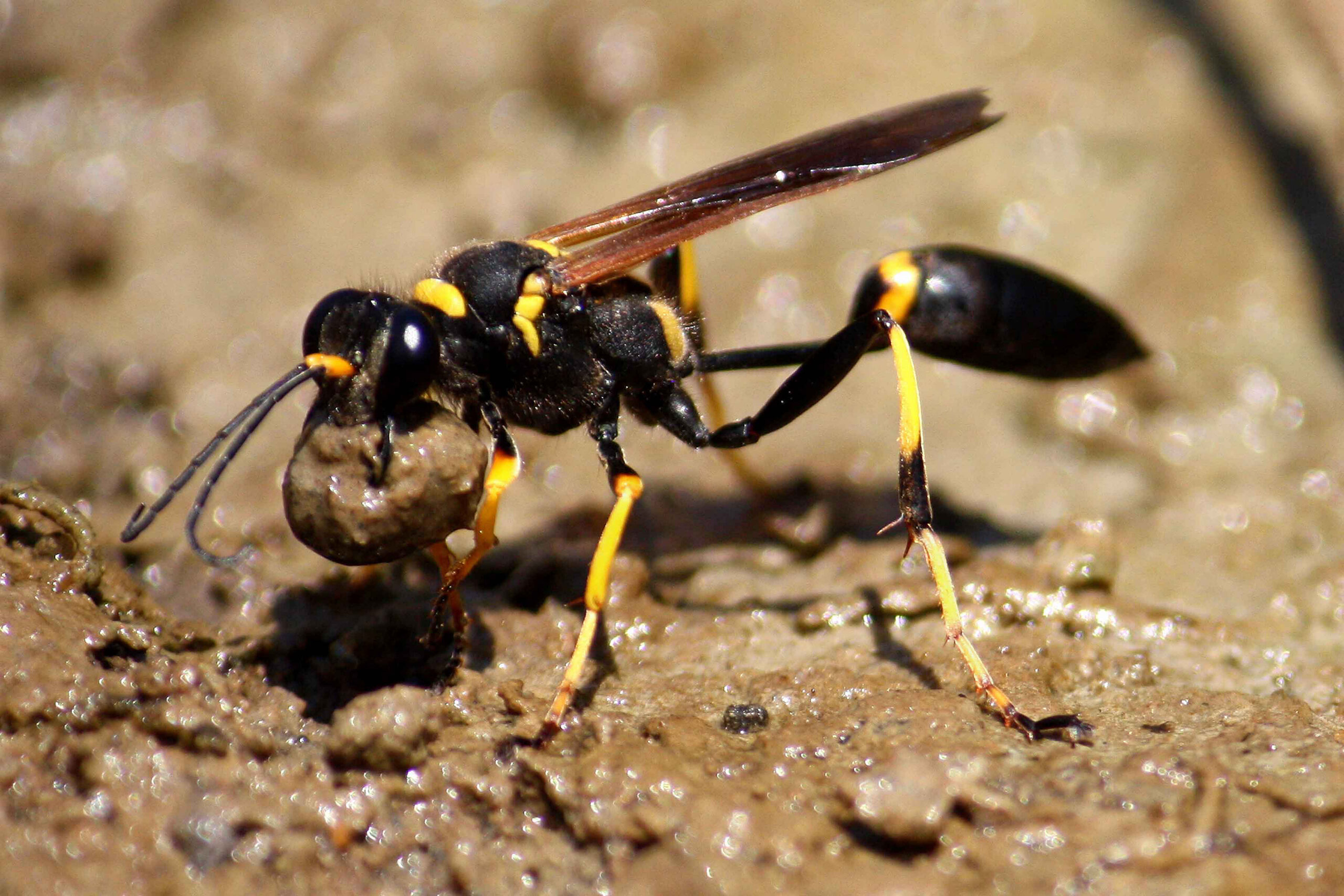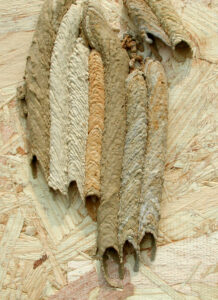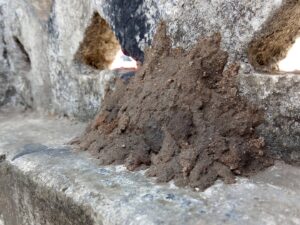Spring through fall can be mud dauber time. While they are a type of wasp (part of the Hymenoptera order), don’t grab the wasp spray just yet. These are considered beneficial insects and typically are not aggressive towards humans.
Texas A&M AgriLife Extension Service program specialist Wizzie Brown, Texas Standard’s go-to insect expert, explains:
Identifying mud daubers
Mud daubers are about three-quarters of an inch to one full inch in length. Across Texas, you’ll find some that are all black, some that are black with yellow markings, and others with an iridescent blue-black color.
Brown says they are easy to distinguish from other wasps because of their waists.
“These have very long, thin, narrow waist area. It’s very thread-like,” Brown says. “So it’s not just the regular pinched waists that you see on paper wasps or bees or things like that.”
Mud dauber nests
Females who have mated make mud dauber nests – though Brown points out these might be more accurately referred to as “nurseries” because the mother does not live in the nest.
Some of these nests are long and tubular. Brown describes these as “organ pipes.” Others are a little less structured.
“I get the ones that are just like a glob of mud. It looks like somebody took a handful of mud and they threw it against the house and it’s just like this big glob of stuff,” Brown says.
Inside the nests are brood cells, where she’ll lay her eggs. Now comes the part that arachnophobes will appreciate.
Hunting for spiders
After she’s built her nest, the mother mud dauber will find a spider and sting it – paralyzing it – and will take it back to the nest.
“They cram [the spider] into the back of that brood cell. And once that’s placed at the very base of that, they lay an egg on it and they go out and they find more spiders,” Brown says.
After that first spider, the other spiders the mud dauber catches and brings back to her nest – up to 25 per brood cell – won’t have eggs in them. They’ll just be there for nourishment for when the babies hatch.
“So once the brood cell is full of spiders and it has the egg in there, she’ll actually close off that cell and then she’ll begin a new one,” Brown says.
Once she’s done with the entire nest, she’ll seal it off entirely and abandon it.
“She’s done her duty. No more maternal care after that point in time,” Brown says.
The process begins again
When the mud dauber egg hatches from its home in the first spider, the larva that emerges will feast on the rest of the spiders its mother provided for it in its brood cell.
The mud dauber larva will transform (or pupate) into a pupa (or immature) wasp.
“And then they will eventually emerge out as an adult the following year,” Brown says. “And then the process starts all over again.”
Do you have a bug question for Wizzie? Drop us a line, and we’ll pass it along.
If you found the reporting above valuable, please consider making a donation to support it here. Your gift helps pay for everything you find on texasstandard.org and KUT.org. Thanks for donating today.















